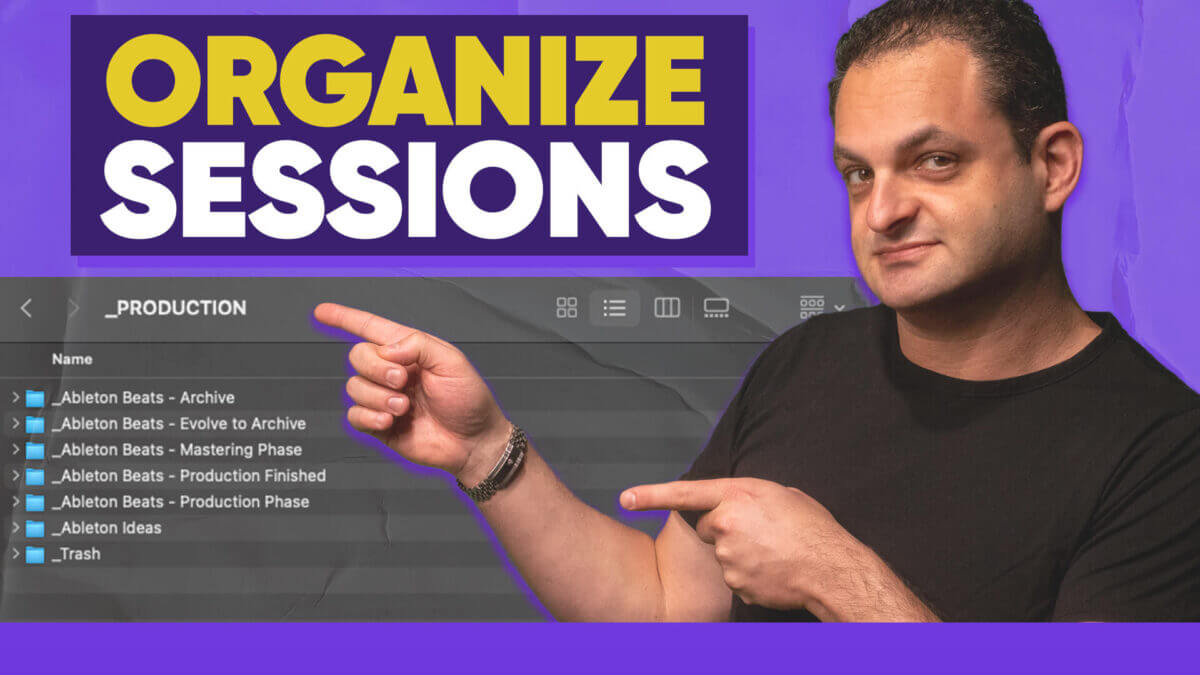
Master Your Music Project Workflow: Secrets to Effective Session and Project Management
Are you a music producer or professional? If so, you know that managing your music projects can be a daunting task. As you dive into various productions, keeping your sessions organized and projects flowing smoothly from stage to stage becomes a top priority. In this week’s video, we’re going to unveil some crucial strategies for effective session and project management in your digital audio workstation (DAW).
When it comes to creating music, be it your own tracks or projects for others, the creative process is only part of the equation. To truly succeed and consistently produce high-quality results, you need to be just as proficient in organizing and managing your music sessions.
Let’s begin with an essential tool for any serious music producer – your production hard drive. Having a dedicated drive for your music work not only keeps your projects organized but also ensures that your DAW performs at its best. The last thing you want is your music projects bogged down by the thousands of files and plugins associated with your DAW.
How I Move Projects from Stage to Stage
Imagine this scenario: You’ve just completed the production phase of your project, and it’s time to move on to mixing, mastering, and possibly collaboration with other artists. Now, how do you keep everything in order and make the transition seamless?
Here’s where our session and project management strategy comes into play. With a well-structured folder hierarchy, you can efficiently navigate your way through different project stages. Let’s explore this strategy:
The Idea Phase: This is where you generate and store your initial ideas. Label your ideas with the artist name, track title, BPM, and key signature. Sometimes, creativity flows faster than your ability to name your projects, but you can do that in later stages.
The Production Phase: As you turn ideas into full tracks, make sure you keep things organized. Your sound library and production library should remain separate. Having a detailed naming system for your projects ensures you can always find what you’re looking for.
The Finished Phase: After your project is complete, move it into this stage. This is where you might create radio edits or prepare the project for mastering. You want to archive your work at this point to avoid clutter and to ensure you always have the final version at your fingertips.
The Evolution Phase: Here’s where you evolve your projects even further. You can go through old projects, clean them up, and extract sounds or elements you’ve designed. Not only does this improve your sound organization, but it also allows you to build your custom sample pack over time.
This structured approach ensures that your projects are always in the right place at the right time. No more scrolling through endless folders or accidentally working on the wrong version of a track.
Personalize and Optimize Your Workflow
This method has worked wonders for me, but it’s essential to remember that your workflow should be tailored to your unique needs. There’s no one-size-fits-all solution in music production, and our goal is to provide you with tools and insights to build your path to success.
Don’t forget to subscribe, like, and hit the notification bell to stay updated on our latest tutorials, tips, and tricks.
